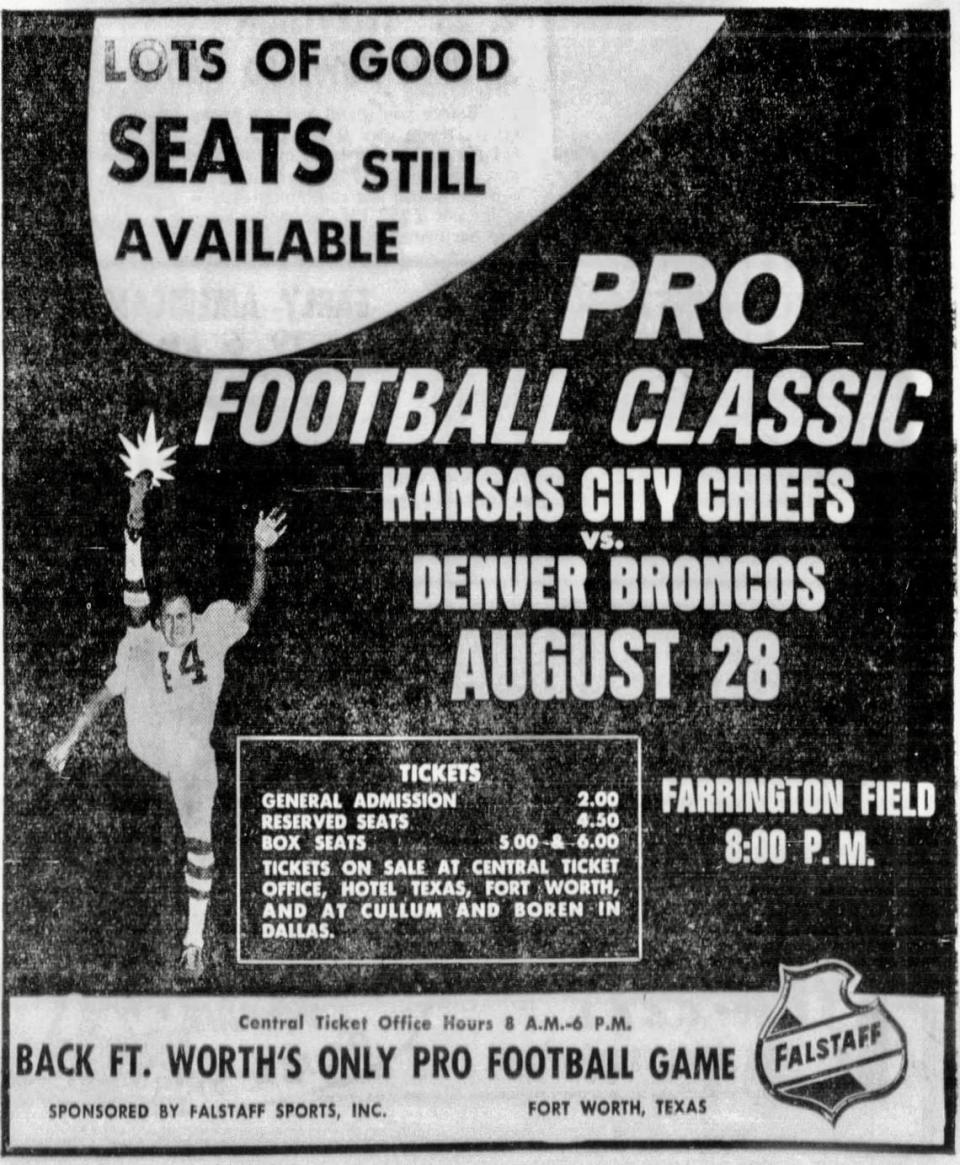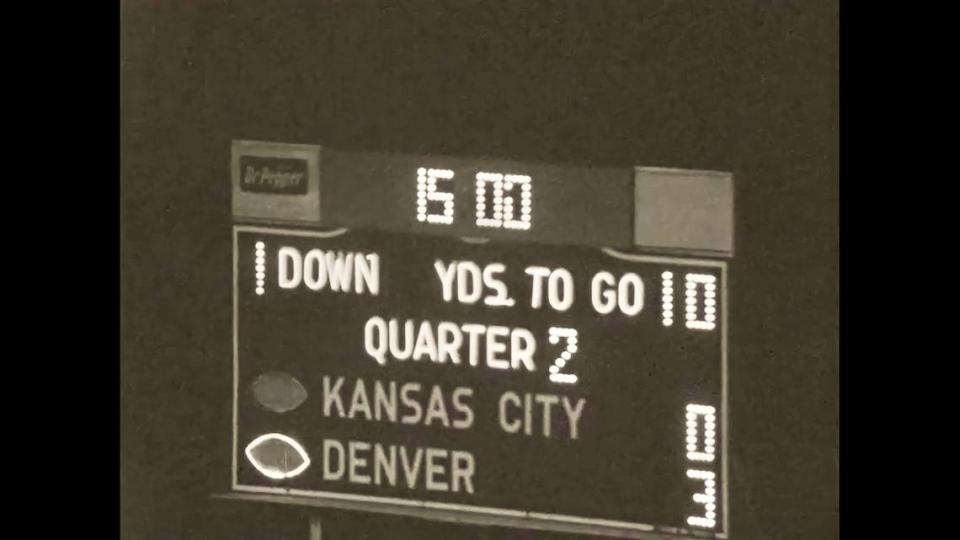Kansas City dreaming: How the Chiefs might have become the Dallas-Fort Worth Texans | Opinion
- Oops!Something went wrong.Please try again later.
- Oops!Something went wrong.Please try again later.
The news was so dramatic, the Star-Telegram included an exclamation mark:
“Pro football is coming to Fort Worth!” was the report in August 1960, when pro football disruptor Lamar Hunt of Dallas said he might change the name of his fledgling Dallas Texans to the Dallas-Fort Worth Texans, maybe in a proposed domed football and baseball stadium in Arlington.
That was before the Texans or rival Dallas Cowboys had ever played their first game.
Three years later, with no domed stadium or baseball team in sight, the Texans took an offer to move and become the Kansas City Chiefs.
The next year, in 1964, the renamed Chiefs returned to Fort Worth for a charity game. The unmistakable bright red and white of today’s Chiefs blazed across the grass at Farrington Field as future Hall of Fame Coach Hank Stram led Kansas City to a 14-10 victory over the Denver Broncos.
And pro football never came to Fort Worth again.
It took nearly 50 years for Arlington to make that first domed stadium a reality, and since 2009, the Dallas Cowboys have played their home games in Tarrant County.
But that history and Fort Worth’s trajectory might have been much different had city leaders in 1960 landed even half the name of a pro football team.
Hunt and the Texans made Fort Worth a target market. The team signed former TCU Horned Frogs stars, opened a ticket office on the West Freeway and brought players to Casa Manana theater musicals and even to stay in the now-gone Loring Hotel at University Drive and Camp Bowie Boulevard.
College student Alann Bedford, now Alann Sampson, was among “hostesses” introduced to promote the Texans in Fort Worth.
“It was exciting because we thought we could have a professional football team,” she said. “Football was king in Texas. If we could have a team, it’d be great.”
Yet the Dallas-Fort Worth Texans remained only a hint in Star-Telegram news stories.
Fort Worth leaders’ investment in major league sports has focused on the baseball Texas Rangers and Arlington. Only one major league sports team has ever called Fort Worth home: the Texas Chaparrals, now the San Antonio Spurs, spreading from their Dallas base for one season in 1970-71 to include Fort Worth and Lubbock.
No major league team has ever been named “Fort Worth.” The city’s primary sports are college football — now, in the Big 12 Conference — Rangers baseball and pro golf.
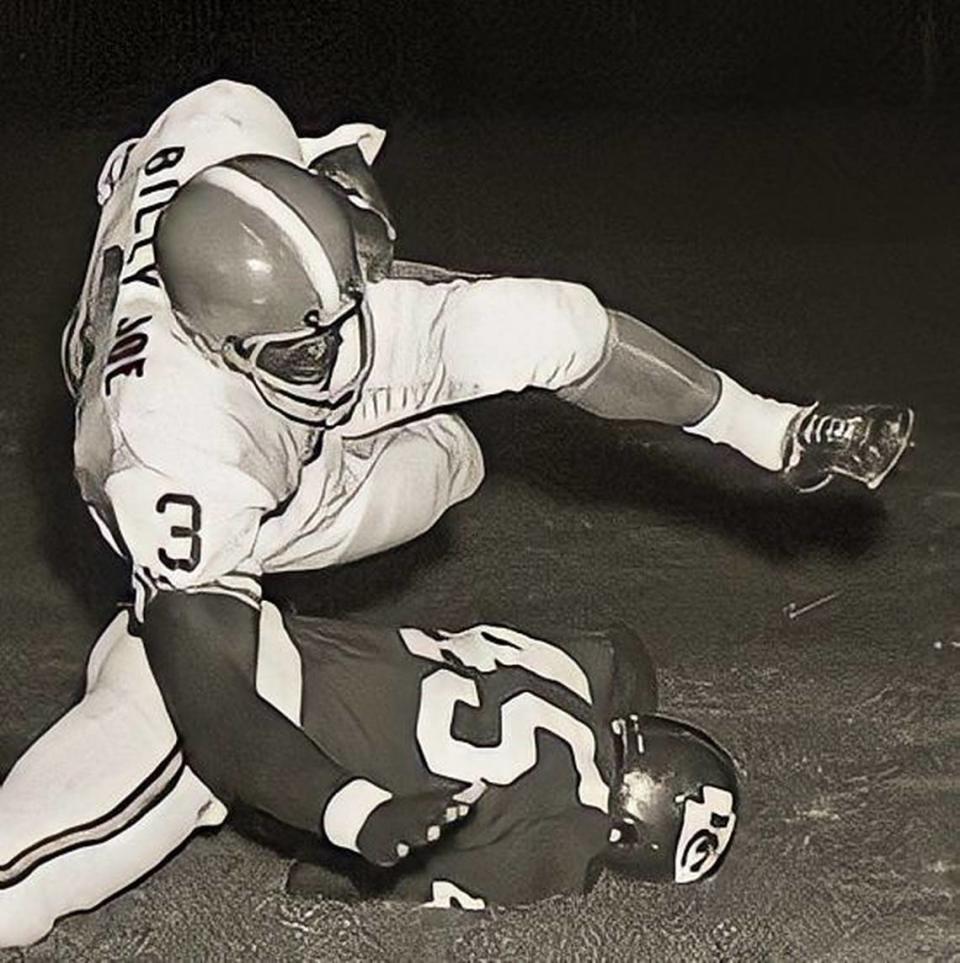
Yet from 1961 to 1964, Fort Worth was home to first the Texans and then the Chiefs for three exhibition games against the Denver Broncos in Farrington Field, the towering old high school stadium in the Cultural District.
The games drew crowds comparable to the Texans’ games at the Cotton Bowl. In 1961. 21,700 fan saw the Texans win 29-27 behnd former TCU star Jack Spikes’ 146 yards total offense. In 1962, 18,000 fans saw a 27-24 Broncos overtime win.
When the Kansas City Chiefs came back to town in 1964, they drew 19,400 fans against the Broncos.
“It was hot — I almost roasted,” then-Chiefs radio announcer Tom Hedrick, later a Fox 4 sports anchor, remembered in a 2023 interview.
“It was not a thing of beauty.”
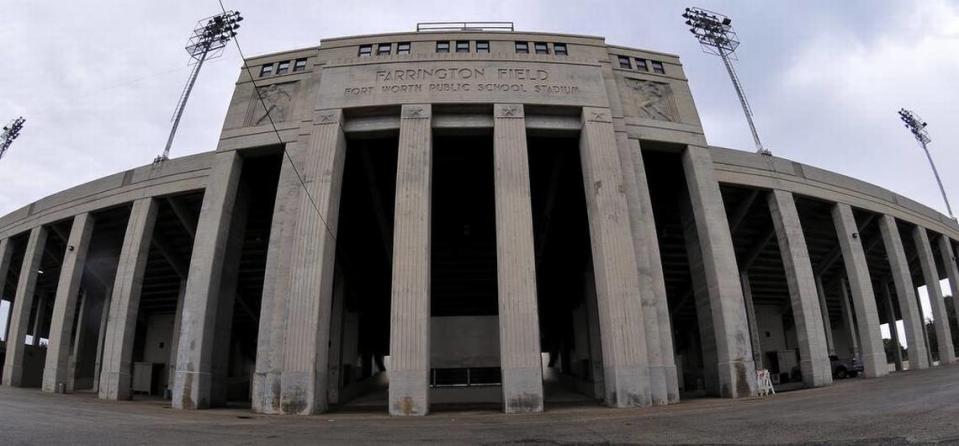
Farrington’s concrete press box and radio booth were like an oven.
“It was so hot, I took my trousers off,” Hedrick said. “We got by. but it wasn’t much of a ballgame.”
The TV highlights are in the KXAS/Channel 5 collection posted online in the Portal to Texas History at the University of North Texas library.
Fans are shown in several scenes, sometimes fanning themselves on a 1960s Texas summer night.
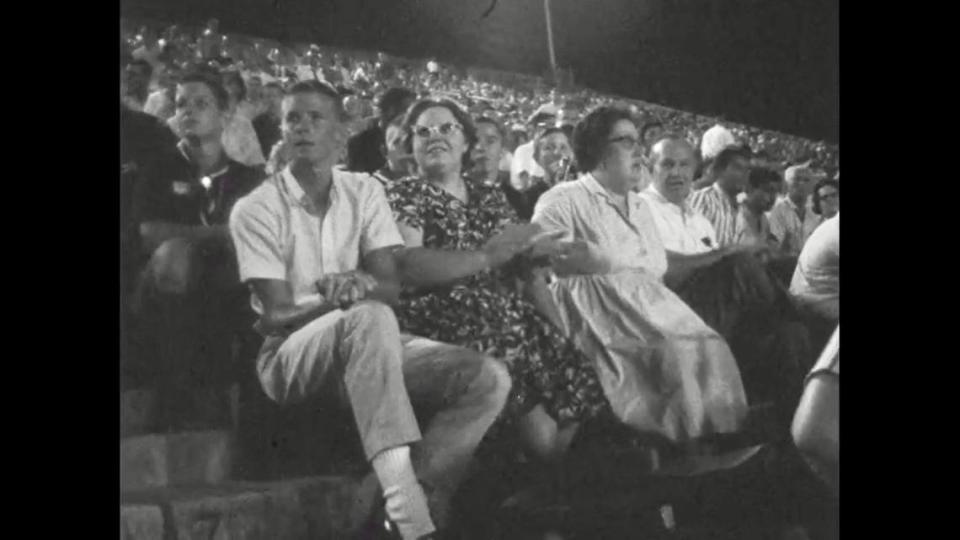
The game was a spectacle sponsored by Falstaff beer — ad slogan: “For Man Size Pleasure” — and promoted by Fort Worth businessman Tommy Mercer. Later, Mercer and Hunt would own the Dallas-Fort Worth Spurs minor league baseball team, the first occupant of Arlington’s old Turnpike Stadium.
End zone tickets to see the Chiefs sold for $1.50.
Programs now sell on eBay.com for $395.
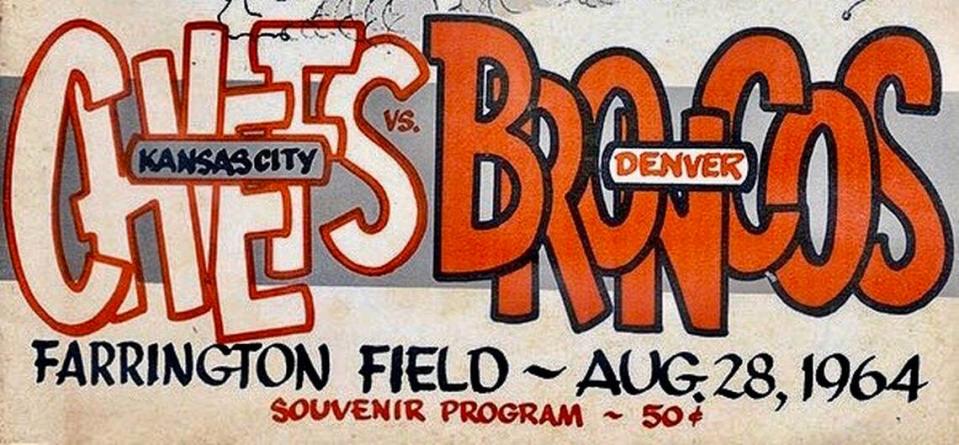
Later, Stram wound up as a Super Bowl champion with a 20-year career as a TV and radio color analyst.
The game film includes two scenes of Stram, then a baby-faced former SMU assistant coach who took the job coaching the Texans and Chiefs.
With star quarterback Len Dawson and running back Curtis McClinton sidelined, fullback Mack Lee Hill’s rushing set up two Chiefs touchdowns by backup quarterback Eddie Wilson.
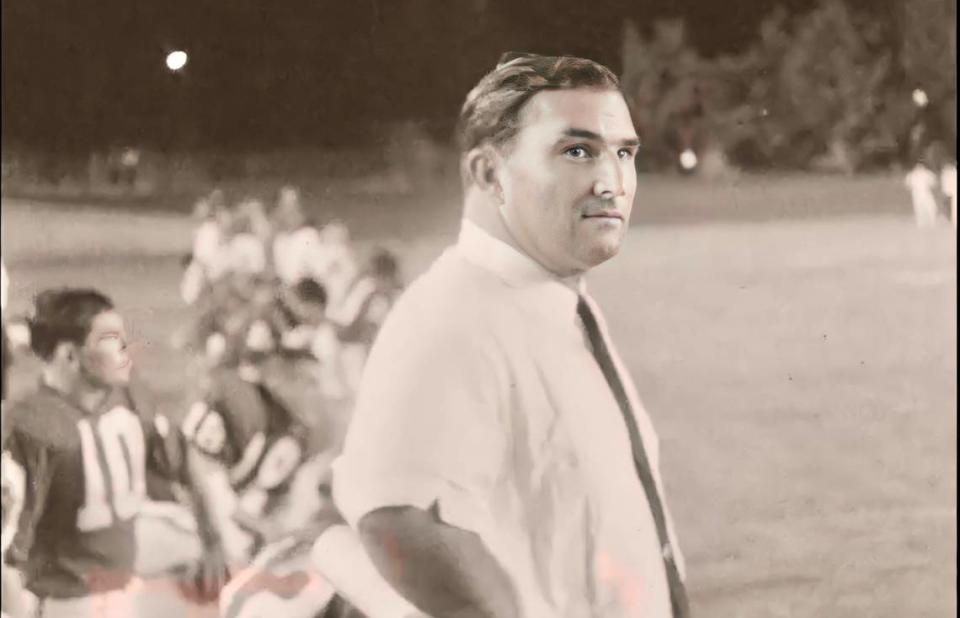
Civic leaders knew even then where the future lay. Star-Telegram Publisher Amon G. Carter Jr. and others were dealing to build a $9.5 million domed stadium in Arlington for football and baseball.
Voters in both Tarrant and Dallas counties had already approved the money for the Bi-County Stadium, a giant, space-age silver dome just like the announced Houston Astrodome.
The Star-Telegram called it a “space-age” $9.5 million stadium with 31,000 seats to completed by 1961, with eventual seating for 60,000 to 70,000.
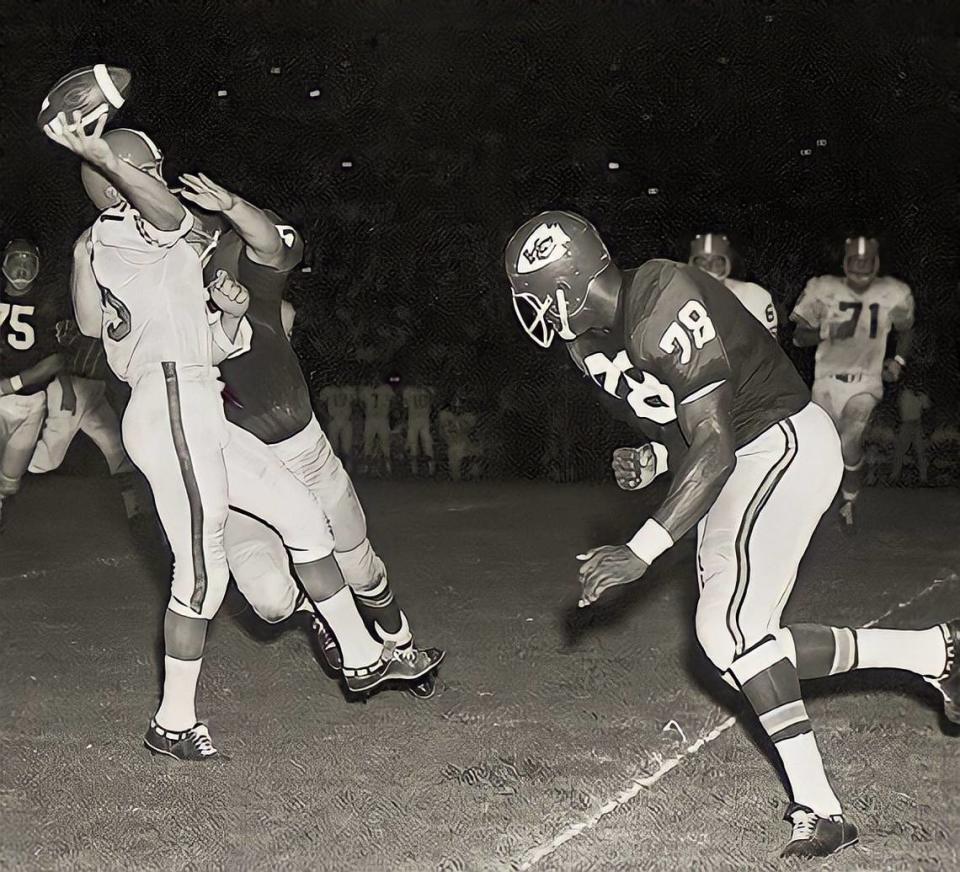
One of the architects boasted that “no games will be postponed because of rain.”
According to Star-Telegram files, the dome drawings were drawn up for a “rush presentation” to entice Major League Baseball and also for the Texans or Dallas Cowboys.
Arlington Mayor Tom Vandergriff, later the hero who brought the Rangers to Texas, said the stadium would bring “millions of dollars to our area — think of the lure it will be.”
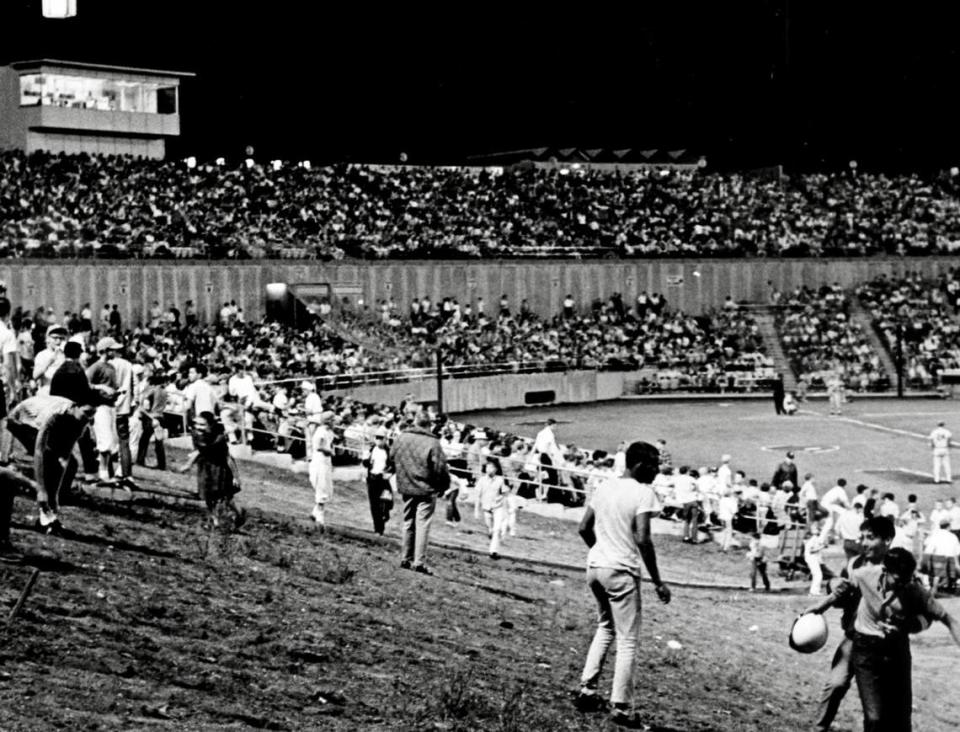
But the idea of an Arlington dome quickly deflated.
The National League gave expansion teams to Houston (then as the Colt .45s) and the New York Mets. The American League gave expansion teams to California and Washington, replacing a team that had moved to Minnesota. It was the same Washington expansion team that moved to Arlington in 1972 as the Rangers.
The stadium land at 1500 E. Copeland Road eventually became the site of Turnpike Stadium and later Arlington Stadium, demolished northwest of Choctaw Stadium and Globe Life Field.
Imagine if leaders had been able to tempt Hunt to keep his team in Texans.
Imagine pro football with the Dallas Cowboys and also with the Dallas-Fort Worth Texans, just as we have a Dallas Fort Worth International Airport.
Imagine Fort Worth in the Super Bowl..
